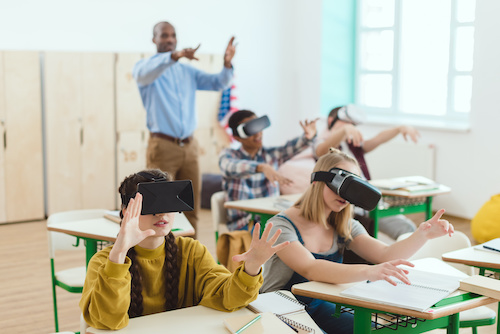Key points:
- Trends change–but great teachers can take trends and transform learning
- SEL, gamification, and project-based learning are all some of the most popular instructional tools in 2023
- See related article: Are you following some of today’s biggest learning trends?
Teachers, we’ve made it! After a long and arduous school year filled with challenges, we have finally reached summer vacation. First, take a moment to give yourself a well-deserved pat on the back. The world of education has only gotten more complicated over these last few years. Many students are still working through the effects of the pandemic, while countless schools have found themselves embroiled in political bickering. That you continued to show up for your students and deliver the best education possible demonstrates just what a champion you are.
Now that we have a little time and space to relax, it’s important to take time and reflect on the school year as a whole. What worked, what didn’t, what could be improved, and what ideas have the potential to bring positive change in the next season?
Van Andel Institute for Education recently asked this very question, and since we always like to go a step further, we’ve compiled the top 6 trends in education for 2023. Here are the latest ideas that teachers should keep an eye on in the next school year:
1. Social-emotional learning: Social-emotional learning (SEL) is not exactly a trend, but it is “trending”.Following the events of 2020, more and more schools are including SEL in their curriculum. SEL is all about teaching students to manage their emotions, practice healthy communication, and collaborate successfully with others. Teachers looking to increase their SEL content can take advantage of free strategies from Blue Apple while also exploring the topic in more detail with these charts.
2. Project-based learning: Like SEL, project-based learning (PBL) is not new — but it has taken on greater significance in recent years. Once upon a time, teachers were the ones to dispense information to students, but now search engines like Google have usurped that role. Today, the responsibility of teachers is to facilitate learning experiences that foster student curiosity, creativity, and critical thinking – and which help them to apply what they know in authentic, real-world contexts. Luckily, there are an abundance of fun, flexible lessons that teachers can use to implement PBL in their classrooms.
3. Soft skills: What do you believe are the most important qualities that employers look for in potential job candidates? It might surprise you to learn that the top skills were things like teamwork, creativity, and perseverance. Soft skills like these will only become more important as technology continues to advance. Teachers can help prepare their students for their future careers by ensuring they have ample experience practicing these habits of mind.
4. Gamification: Play is a powerful way to learn. Gamification has been shown to increase classroom engagement, aid in cognitive development, and offer a host of other benefits to young learners. Instead of having students compete against each other, leverage the power of competition and collaboration simultaneously by having students work together to beat a class goal or to show improvement over time. It’s a simple little hack to make gamification even more effective!
5. STEM: Right now, the fastest growing career fields are in the areas of science, technology, engineering, and math (STEM). As such, it is vital that students have a solid grasp on the principles of STEM before they graduate. Not only will this be important to their future careers, but given the speed at which technology is evolving, they will likely need this knowledge to function in their day-to-day future. An easy way to get students started is with free, 15-minute lessons that will familiarize them with the qualities of STEM.
6. AI: Finally, we come to the most notorious subject in education today – the rise of AI. While some are excited about the possibilities that AI will unlock, many are rightfully concerned about its unethical usage and potential for cheating. While it’s still too early to fully know what AI holds for education, teachers can implement it positively by pitting their students against AI and learning how they can improve upon its work.
The future of education is always changing, but one constant is sure to endure. In order for students to grow, they will need dedicated teachers to foster their minds and encourage them to reach their potential. By reading this, you have already proven that you’re ready to meet the challenge. So, remember to stay up to date on the latest trends in education, and give your students the best chance for success in the new school year.
Related:
8 education trends bringing disruption in 2023
- 4 ways to encourage play in education - April 25, 2024
- CoSN IT Leader Spotlight: Lisa Higgins - April 25, 2024
- It’s time to pay student teachers - April 25, 2024

